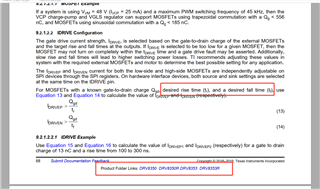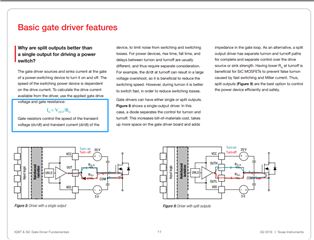In the datasheet(<<DRV835x 100-V Three-Phase Smart Gate Driver>>) page 68,what is the definition of tr, and what is the difference between it and tr in the mosfet parameters, and how to calculate the current when charging the gate? Is it Vvcp/Rg or DRIVEP,because in the example Vvcp/Rg>IDRIVEP.
-
Ask a related question
What is a related question?A related question is a question created from another question. When the related question is created, it will be automatically linked to the original question.


 So in the actual circuit does it turn on the gate by charging the parasitic capacitance with IDRIVE(1A peak source current)?If not, which formula is used for the average charging current during the charging process when the gate is turned on? How does it relate to IDRIVE?
So in the actual circuit does it turn on the gate by charging the parasitic capacitance with IDRIVE(1A peak source current)?If not, which formula is used for the average charging current during the charging process when the gate is turned on? How does it relate to IDRIVE?